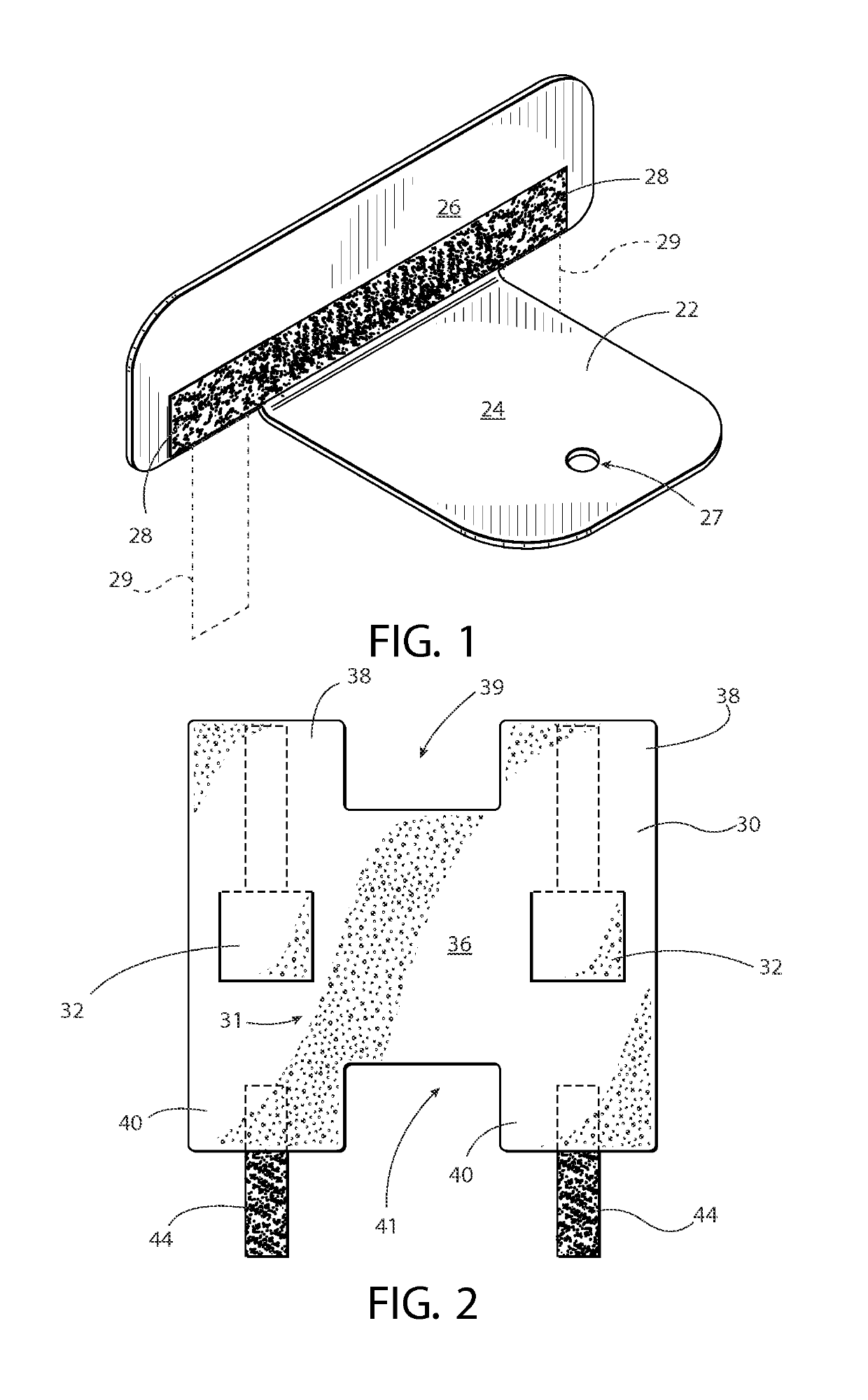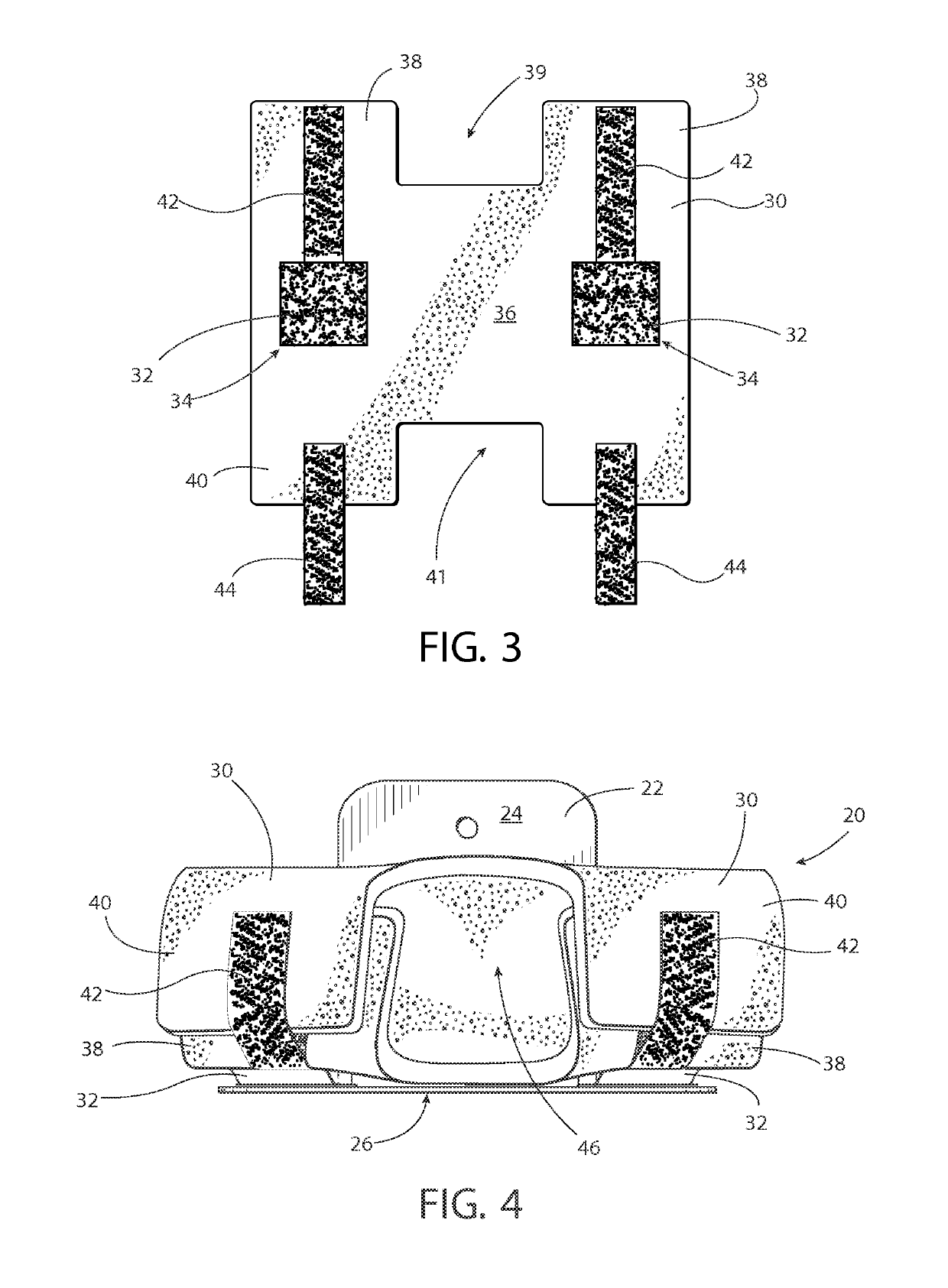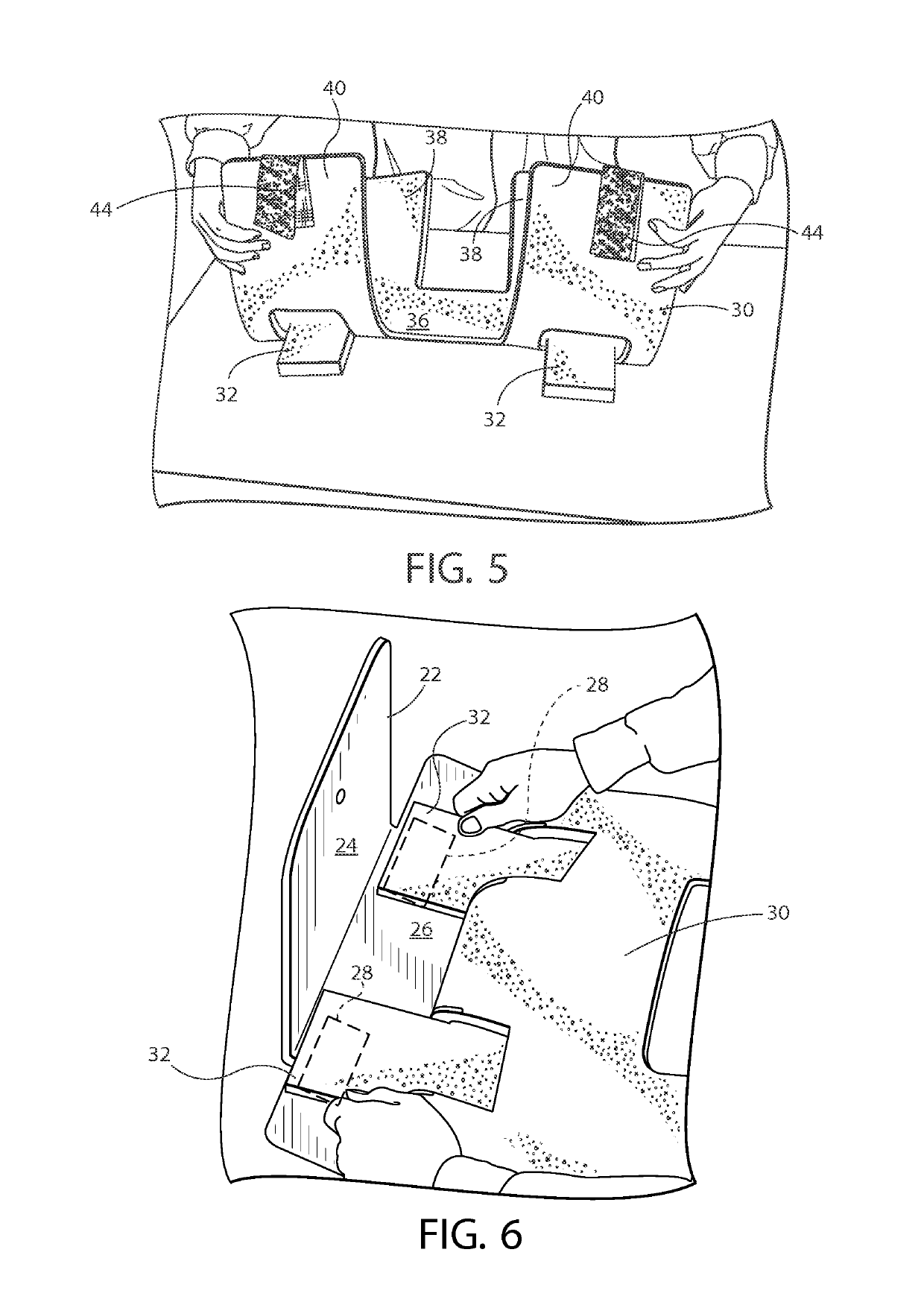Arm restraint for surgery tables
a technology for operating table and arm restraint, which is applied in the field of patient arm restraint system for operating room table, can solve the problems of affecting the flow of iv fluid, surgeon(s) or assistant(s) often inadvertently leaning against the patient's arm, and a risk of operating room acquired patient nerve injury
- Summary
- Abstract
- Description
- Claims
- Application Information
AI Technical Summary
Benefits of technology
Problems solved by technology
Method used
Image
Examples
Embodiment Construction
[0025]Example embodiments that incorporate one or more aspects of the present invention are described and illustrated in the drawings. These illustrated examples are not intended to be a limitation on the present invention. For example, one or more aspects of the present invention can be utilized in other embodiments and even other types of devices. Moreover, certain terminology is used herein for convenience only and is not to be taken as a limitation on the present invention. Still further, in the drawings, the same reference numerals are employed for designating the same elements.
[0026]The present application relates generally to patient restraints for surgery tables, and more particularly, to a patient arm restrain device for an operating room table that is used to support, restrain, posture and / or expose the entirety of, or any portion of, one or both of a patient's arms before, during or after the completion of any surgical procedure or intervention. The primary role of the de...
PUM
 Login to View More
Login to View More Abstract
Description
Claims
Application Information
 Login to View More
Login to View More - R&D
- Intellectual Property
- Life Sciences
- Materials
- Tech Scout
- Unparalleled Data Quality
- Higher Quality Content
- 60% Fewer Hallucinations
Browse by: Latest US Patents, China's latest patents, Technical Efficacy Thesaurus, Application Domain, Technology Topic, Popular Technical Reports.
© 2025 PatSnap. All rights reserved.Legal|Privacy policy|Modern Slavery Act Transparency Statement|Sitemap|About US| Contact US: help@patsnap.com



